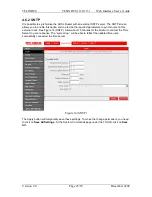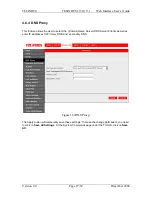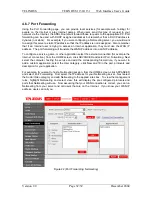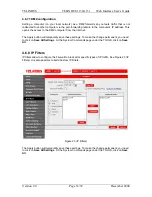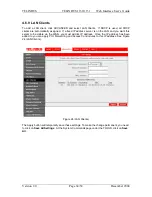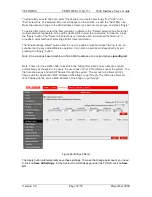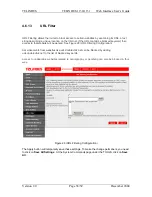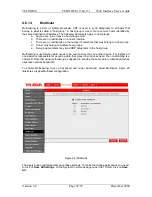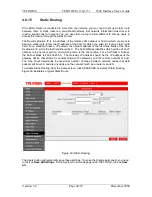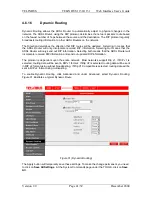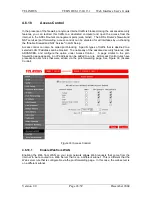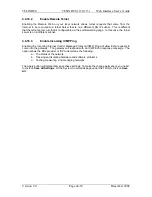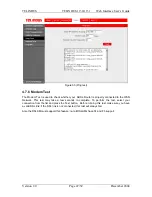
TELINDUS TELINDUS
1130/1131
Web
Interface User’s Guide
Version 2.0
Page 39/52 December
2004
4.6.14 Multicast
Multicasting is a form of limited broadcast. UDP is used to send datagrams to all hosts that
belong to what is called a "host group." A host group is a set of zero or more hosts identified by
the same destination IP address. The following statements apply to host groups.
a. Anyone can join or leave a host group at will.
b. There are no restrictions on a host's location.
c. There are no restrictions on the number of members that may belong to a host group.
d. A host may belong to multiple host groups.
e. Non-group members may send UDP datagrams to the host group.
Multicasting is useful when data needs to be sent to more than one other device. For instance, if
one device is responsible for acquiring data that many other devices need, then multicasting is a
natural fit. Note that using multicasting as opposed to sending the same data to individual devices
uses less network bandwidth.
To enable Multicasting, click on Advanced and under Advanced, select Muliticast. Figure 29
illustrates a typical Multicast configuration.
Figure 29 (Multicast)
The Apply button will temporarily save these settings. To make the change permanent, you need
to click on
Save All Settings
. At the System Commands page under the TOOLS, click on
Save
All
.

